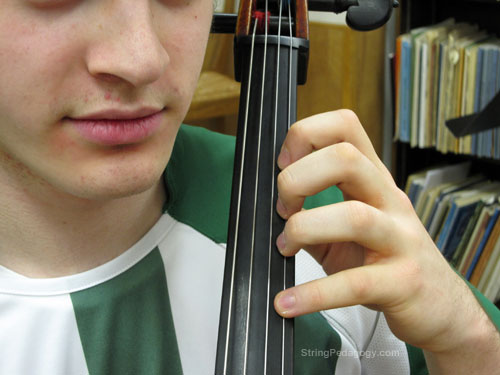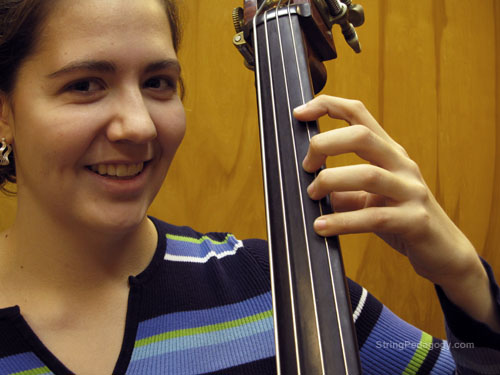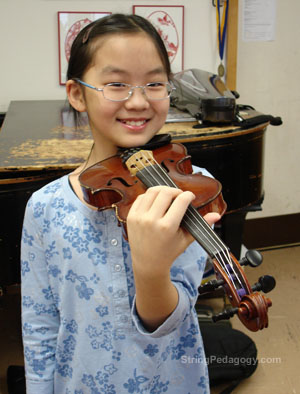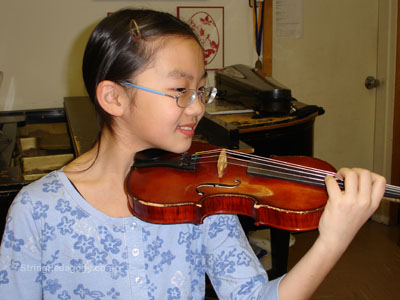 Cello
CelloSTARTING TO PLAY
Beginning Sequence
The first lessons will involve the instrument only, without the bow. Once a comfortable playing position with the instrument is established, the bow will be added. Remember along the way to often review the initial set-up. As new tasks are added, the previous ones are consistently reviewed.
Violin and Viola
From the first lesson establish a good rest position. This gives students a solid reference for their instruments when they are not being played, maintains quiet for the teacher allowing the students to listen, and ensures that the instruments will not be dropped and damaged. Violins and violas will be held under the right elbow, with the scroll facing the left side of the body.
Cello and Double Bass
Cellists and double bassists will maintain regular playing position as their rest position. Cellists hands should be in their laps and double bassists can support the instrument at the bout with their left hand while the right hand rests at their side.
Tapping in Rest Position
For all instruments, the first exercise of tapping over the high dot encourages a released left hand. With round, relaxed fingers, students will imitate rhythmic sequences initiated by the teacher by tapping softly on the fingerboard. The released action of this motion discourages grabbing by the left hand, and will be used throughout the beginning and intermediate levels to initiate vibrato motions.
Sliding
Violin / Viola |
Cello / Double Bass |
|
|
For rest position, the violin is tucked gently under the right arm. Rest the left hand over the high dot in rest position and slide along the neck on the Magic X. As you slide back and forth on the Magic X, bounce the hand gently off the upper bout of the violin. Make sure that the left thumb is flexible and travels with the hand. This exercise helps relax the arm, pre-sets the shifting motions, and allows the students to become comfortable with their instruments.
Cellists and double bassists will slide their fingertips lightly over the strings between the high dot and first position, maintaining the “C” space between their fingers and the thumb.
 Cello
Cello
 Double Bass
Double Bass
Statue of Liberty
Violin and Viola
Paul Rolland’s Statue of Liberty is perhaps the single most important exercise in setting up the proper playing position of violinists and violists. In rest position, with the hand over the high dot, the players pull the instruments away and above the body into a Statue of Liberty stance. From that position, turn the instrument to the playing position and set it from above onto the collarbone. Watch that the instrument comes from above the body, and that the head maintains its proper position above the spine with the head looking straight ahead. It is common to see turtle necks where the player anticipates the approach of the instrument and reaches out with the head to greet it! (Not good!) Check to see that there is minimal (yet not tightly pressed) space between the neck and the instrument. The instrument should snuggle loosely into the neck to create a firm foundation for a flexible left hand. Violin beards grow when the instrument is centered under the chin and has no shoulder support. “Shaving” the beard by moving the instrument so that it is supported by the jaw, collarbone and shoulder will free the left hand.
 The Beard
The Beard
 The Turtleneck
The Turtleneck
Checking Violin and Viola Instrument Stability